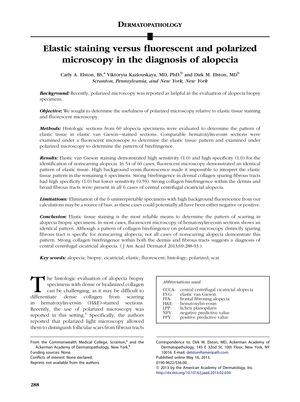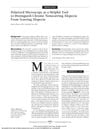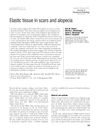Elastic Staining Versus Fluorescent and Polarized Microscopy in the Diagnosis of Alopecia
May 2013
in “
Journal of The American Academy of Dermatology
”

TLDR EVG staining is the most reliable method for diagnosing alopecia.
In a study of 60 alopecia specimens, elastic Verhoeff-Van Gieson (EVG) staining proved to be the most reliable method for diagnosing scarring patterns in alopecia, with perfect sensitivity and specificity (1.0). Fluorescent microscopy was generally in agreement with EVG staining, but in 6 cases, high background fluorescence interfered with the results, leading to sensitivity and specificity ranging from 0.81 to 1.0. Polarized microscopy, while highly specific (1.0) for nonscarring alopecia, had a lower sensitivity (0.59) and risked misdiagnosis in some cases. The study highlighted the importance of understanding the strengths and limitations of each method, with EVG staining offering high accuracy despite additional costs and delays, fluorescent microscopy being immediate and cost-effective but sometimes difficult to interpret, and polarized microscopy being specific but less sensitive for nonscarring alopecia.


